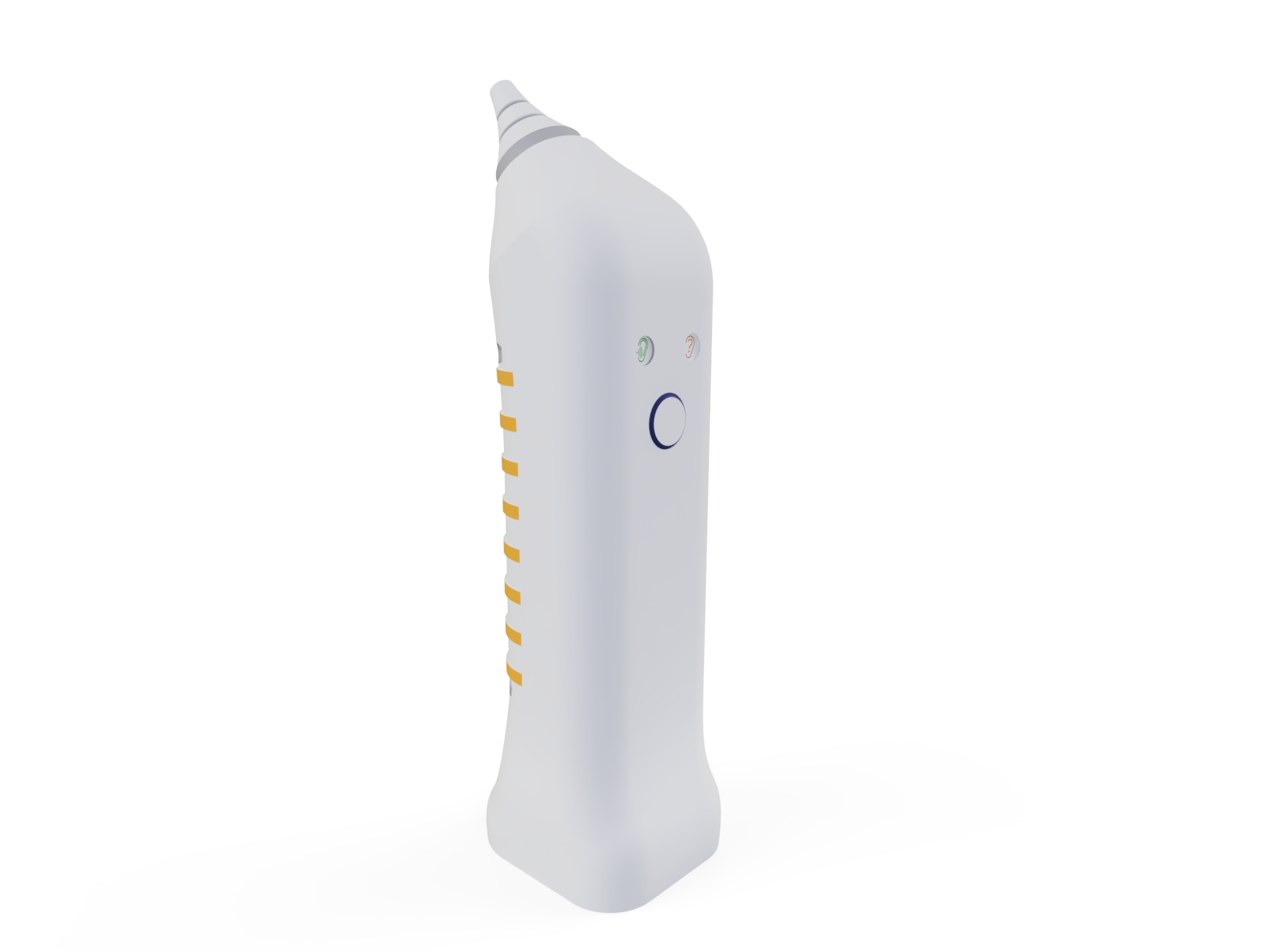Newborn Hearing Screening Device (Spring 2020)
Summary
In 2.739 (Product Design & Development) in Spring 2020, I worked with a 8-person team of engineers, designers, and business students
to design and build a low-cost, portable newborn hearing screening device.
Although the class went remote mid-way through the semester and physical prototyping was limited,
the team focused our energy on a proof of concept prototype and instructional materials to accompany the device.
I used the project as an opportunity to practice new design skills, such as CAD animation and rendering and graphic design.

Key Skills
- CAD animation and rendering (Fusion 360)
- UI design
- Materials selection
- Design process - problem identification to detailed design
Problem
In the U.S., all newborns undergo a hearing screening shortly after birth which flags any abnormalities in the child's hearing.
The screening is not diagnostic, but an abnormal result merits specialist medical care.
Delays in identifying hearing loss can affect the developmental progress of a child, as hearing is crucial to many learning processes.
The machines used to test the newborn's hearing are large, expensive, and often unavailable in developing nations or under-resourced areas.
Thus, problems with a child's hearing may not be detected until the child is several years old.
Our team set out to prototype and build a device that utilizes the same technology to test a newborn's hearing, but with a user-friendly and intuitive form factor and user interface.
We also explored the business case for this product.
Design Objectives
- Deliver realiable hearing test results, indicating normal hearing or further testing needed
- Manufacture and produce product for significantly lower cost than comparable devices
- Device must be safe and ease of use is also prioritized
Process
We identified the technology that would be best adapted as Transient Evoked Otoacoustic Emissions (TEOAE).
The team built sketch models of early concepts with foam to test out different form factors.
Prototyping of the electronics and iterations on the form factor CAD occured simultaneously.
I led the investigation of simple graphics to communicate "normal hearing" or "more investigation needed".
Some sample graphics are shown to the right. Color, familiar symbols, and unintentional meanings were considered.
Because our device was considered non-diagnositic, we were careful to not use too "prescriptive" graphics, instead settling for a question mark to indicate further testing was needed.

Results
Our physical prototyping was somewhat limited by the circumstances of the pandemic, but we did unify the electronics and outer form factor into a proof of concept device (pictured below).
The electronics of the design were composed on a breadboard and the outer shell, after being refined in CAD, was 3D printed.
Testing was done on normal ears of one teammate and using a grapefruit to simulate an ear with abnormal hearing.
Given the unique opportunity to design for a lower-resourced context, our team considered the use context of the device carefully.
As detailed above, we aimed to make the product as easy as possible to use and understand. This included creating instructional material for the device.
I led the development of an instructional guide for use of the device (pictured right).
The guide is picture-based in order to make it as accessible as possible for speakers of many different languages.
Link to final presentation slides

